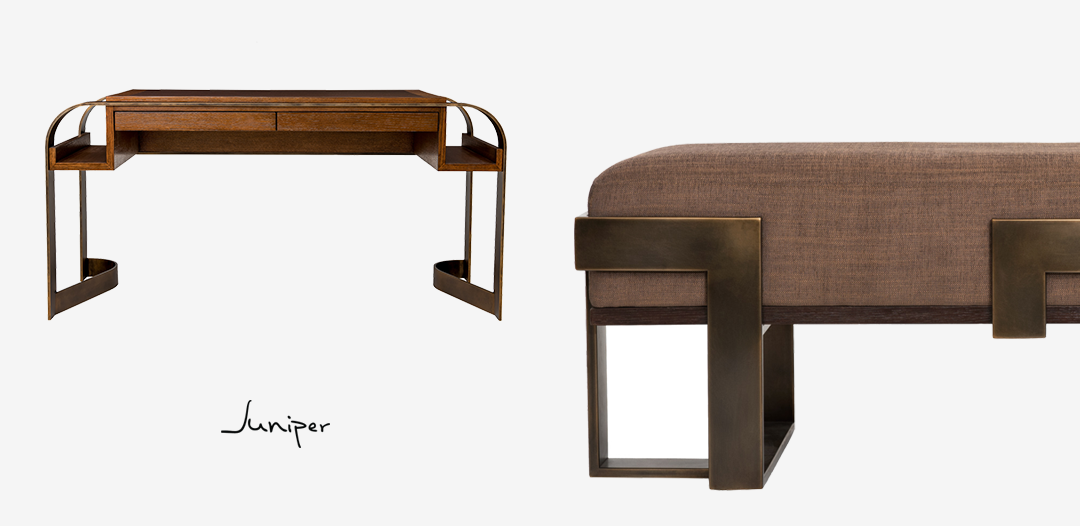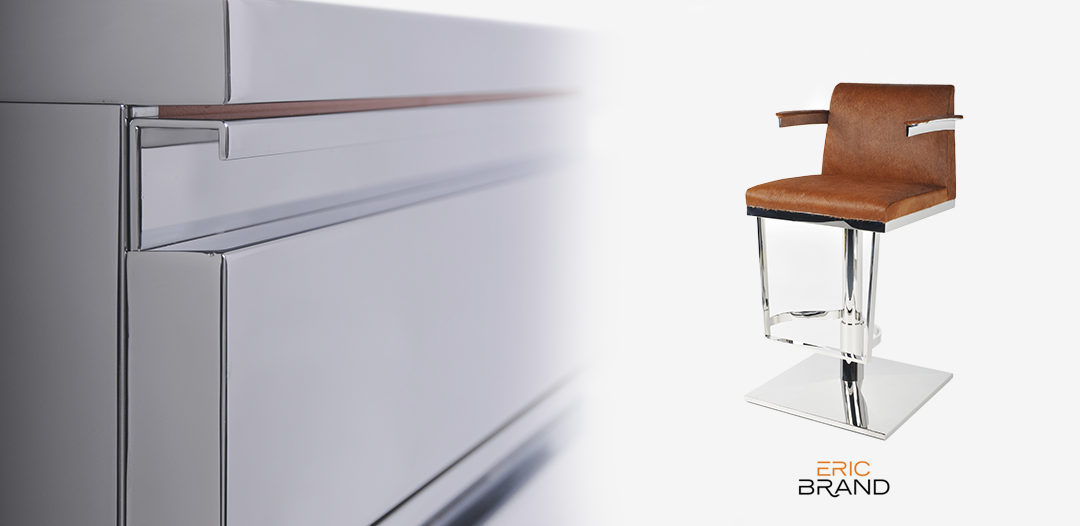Precision has been an aesthetic virtue ever since the Egyptians spent 20 years constructing the Great Pyramids approximately 4,500 years ago. We may not realize it, but our brains are always trying to seek out symmetry wherever we look. When the things we see have balance and precision, we don’t have to work as hard to figure out the use and flow of their space.This principal applies to everything from architecture and fashion, to interior design and furniture.
This is why symmetrical interiors are often viewed as more restful and peaceful than their artistically asymmetrical counterparts. Our brains find it pleasing when there is order and, as a result, we tend to rank symmetrical spaces as being more attractive.
There is perhaps no better example for symmetrical precision within interior design than machined metal furniture – which is why Eric Brand and Juniper have created several choice pieces utilizing this method.
Machining is any of several processes in which a piece of raw material is cut into a desired shape and size by a controlled material-removal process. These processes are collectively known as “subtractive manufacturing” and includes shaping, planing, broaching and sawing.
Custom metal fabrication employs a wide range of industrial tools and equipment that can cut, bend, roll and join metal into complex shapes and assemblies. Such methods include specialized saws, shears, and sources of extreme heat, which can include high-definition plasma and laser cutters. Arc welders and portable cutting torches are perfectly acceptable for a range of metal designs, but when you want absolute precision and symmetry, you really can’t beat laser beams.
In fact, much of modern-day machining is carried out by computer numerical control (CNC), in which – as the name suggests – computers are used to control the movement and operation of the mills, lathes, and other cutting machines. CNC allows manufacturers to generate a mathematically-precise ratio of geometry and surface texture. In other words, machined metal furniture is literally a cut above the rest.
Stainless Steel is commonly used for most modern interior furnishings involving metal – including hinges, slides, supports and body pieces. Stainless has a high tensile strength, allowing it to be applied using hollow tubes, which helps reduce weight. Also popular for use in furniture is aluminum, which is both lightweight and corrosion-resistant – making it ideal for stamped and cast furniture, especially molded chairs. Although metal furniture is often associated with cold, hard surfaces, it’s easy to add cushions and upholstery to make the furniture as comfortable, warm and attractive as you desire.
In addition to the aesthetic qualities of machined metal furniture, durability is a key attribute. For example, not many types of non-metal furniture can remain outside during winter and still look good when spring arrives. If cared for properly, metal furniture can last for decades because it’s usually treated for rust and heat resistance with little maintenance required.
So if you’re looking to add some precision and style to your home or office that can stand the test of time, look no further than the machined metal furniture of Juniper and Eric Brand. They may not outlast the Great Pyramids, but they’ll certainly be much more comfortable.
______________________________________
ERIC BRAND
Founded in 1996 and based in San Francisco, Eric Brand offers custom-styled furniture and worldwide sourcing along with exquisite materials and finishes, specifically for the high-end residential design market and hospitality industry.
JUNIPER
Named after the fog-licked Juniper trees on the hills of San Francisco, Juniper is an in-stock furniture collection by Eric Brand reminiscent of the Art Deco movement in Paris that pays homage to timeless materials, techniques and silhouettes – brought to life through expert craftsmanship.

